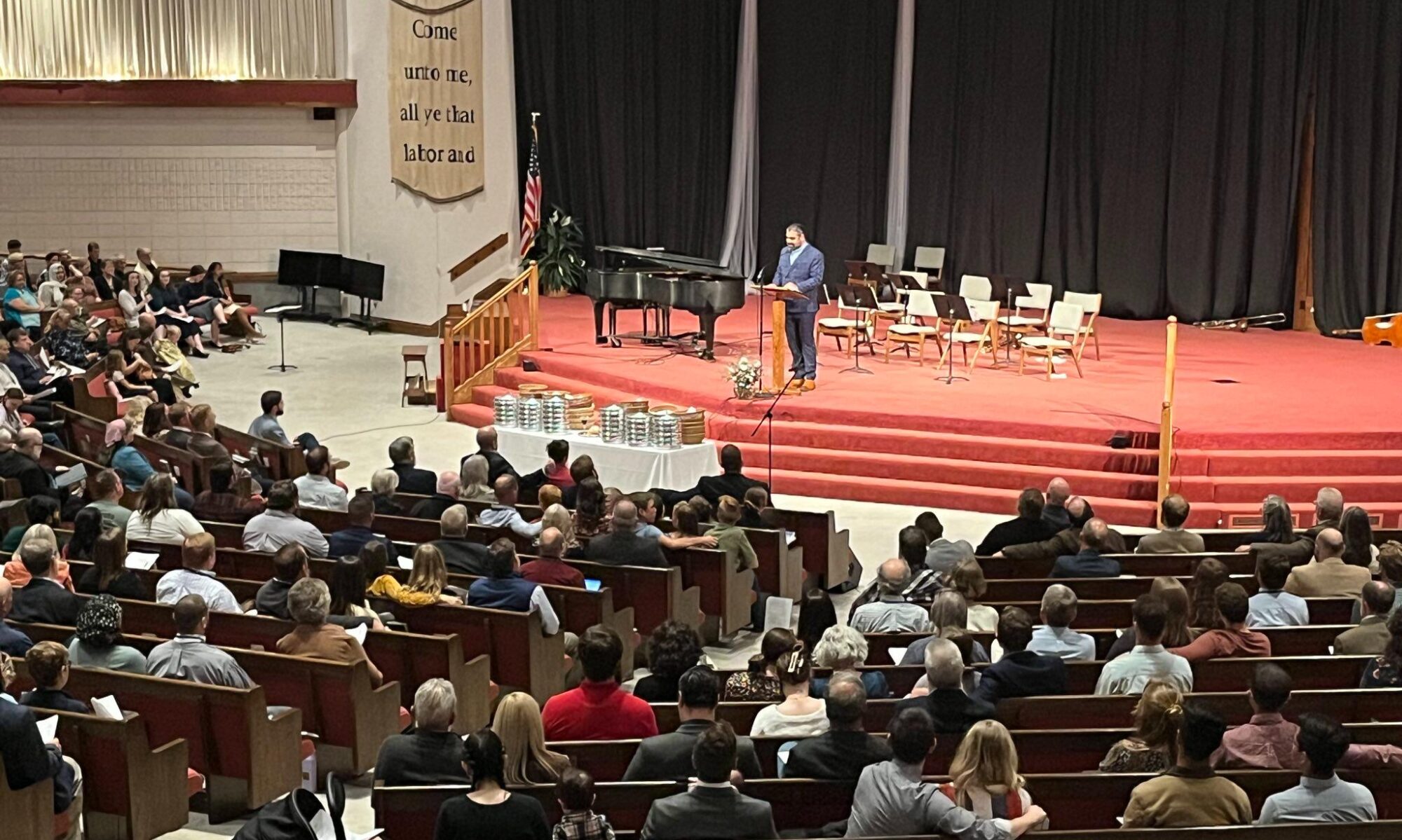 Since I have been deeply involved in the eschatology debate for over ten years, had some of my works published in other eschatology websites, interviewed postmillennial authors, and have been in the healthy business of proselytizing premils to the postmil position for just as long, I have noticed a few trends. My own transition from pre to postmil was not neat. I wondered in the other premillennial categories and in the “Amillennial parking lot” for a short while.
Since I have been deeply involved in the eschatology debate for over ten years, had some of my works published in other eschatology websites, interviewed postmillennial authors, and have been in the healthy business of proselytizing premils to the postmil position for just as long, I have noticed a few trends. My own transition from pre to postmil was not neat. I wondered in the other premillennial categories and in the “Amillennial parking lot” for a short while.
I confess a deep appreciation for my amillennial brothers. Men like Vos, Horton, and Beale continue to offer fresh insights into the biblical text and to expand the biblical theological vocabulary in some desirable directions. Beale’s work on a theology of worship is a gift to the church.
But while appreciating their labors I also see a trend in the use of language that can be harmful to the postmillennial cause. I refer specifically to the use of the language “already, and not yet.” “This theological concept of “already” and “not yet” was proposed by Princeton theologian Gerhardus Vos early in the 20th century, who believed that we live in the present age, the ‘now’, and await the ‘age to come.” The premillennialist George Eldon Ladd had used similar language when arguing that we taste a little now of the age to come, but not the fullness of it.
Vos and Ladd share similar viewpoints, though they would have differed on their interpretation of I Corinthians 15:24-26. That essentially is the only difference between a historic premil and an amillennialist; a few chronological issues, but a firm agreement on the continuation of the decline of civilization. Some amil scholars still argue among themselves on the identity of a future anti-christ. Other amil thinkers embrace the “optimistic” label to balance out the “amil” label, though this is a more recent phenomenon.
Already, and not yet
This language can be helpful at times, and it has turned into a unified slogan among many in the Reformed camp to combat pre-tribulational theology. Let us assume for the moment that the pre-trib. position is unsustainable and not even worth debating. If this is the case, how is the language of “already, and not yet” been helpful to elaborating the victorious promise of the gospel declared by postmil advocates in the Reformed camp? I venture to say it has not been helpful at all in the postmil eschatological proposal. When the amil advocate uses the language–and the language was coined by amillennial advocates–he means that though we taste a bit of the world to come now, we ought not to expect any type of cosmic manifestation in power and might of the gospel until the Second Coming.
This embodies a largely pessimistic vision of the work of the gospel in the end of history. Again, this is not a debate on the post-resurrection world. There is no debate on that issue. We all affirm the Gospel victory then. The question is: “What will the world look like before Jesus returns at the end of history?” Kenneth Gentry offers a helpful definition of postmillennialism:
“Postmillennialism is the view that Christ will return to the earth after the Spirit-blessed Gospel has had overwhelming success in bringing the world to the adoption of Christianity.”
Assuming this definition, we are affirming that not only will we receive a taste of the world to come in this era of human history, but we will also see with our eyes and touch with our hands the very progress of the Spirit-blessed Gospel in the world.
If not “already, and not yet,” then what?
So what am I suggesting? I am suggesting we no longer use that language, except in very specific cases. This language may be helpful in communicating ideas with someone re-thinking the dispensational position, but even then I recommend caution, since they may be prone to research this language and be led to amillennial writers.
We are not suggesting a utopian society. We believe sin will always be with us until Jesus returns, but we are also affirming that human sin will lose the war against the gospel when it comes to the conversion of the nations. I agree with my mentor, James Jordan, that as the gospel brings people and nations to submit to King Jesus and as the Gospel becomes more prevalent in the national discourse we will also see a greater battle against our own sin since people will become more aware of their struggles. This, however, does not negate the imperative that the nations will come to Zion and worship (Is. 2, 11), but it emphasizes that confession and repentance will always be part of the Christian experience in this world.
Instead of the “already, and not yet” language we may choose to refer to our hope as the “already, already, but not yet,” emphasizing that we will not just taste of the world to come, but also experience the world to come in this world. Obviously this is a long-term strategy. Postmillennialists are not naive to suggest that this Spirit-blessed Gospel will cause world-wide transformation over night, rather this is a long-possibly millennial- project. A double “already” emphasizes the reality of this Gospel vision in history. Further, it emphasizes that we are not simply tasting of the world to come individually, but corporately as a people.
This world is indeed our home, and we long for a renewed world. We do not despise this creation, we long for its restoration.
What other language can we use?
If the “already, already, but not yet” seems like a theological technicality, then I suggest a few other phrases. We are living in the age of “glory to greater glory,” “fulfillment to greater fulfillment,” present, but not fully present,” “joy to greater joy,” blessing to greater blessing.” These are all categories that define the glory of the transformative gospel before the Second Coming.
You may even provide a better and more accurate picture of this truth in words if time allows, but in the meanwhile be cautious with the “already, and not yet” language. History matters to God. And describing that history in certain words can communicate something we do not wish to communicate.


 Since I have been deeply involved in the eschatology debate for over ten years, had some of my works published in other eschatology websites,
Since I have been deeply involved in the eschatology debate for over ten years, had some of my works published in other eschatology websites,  Evangelicals overall do a fine job at defending the trivial but struggle to defend the hard things. Machen observed long ago in his monumental Christianity and Liberalism that “it appears that the things that are sometimes thought to be hardest to defend are also the things that are most worth defending (8).”
Evangelicals overall do a fine job at defending the trivial but struggle to defend the hard things. Machen observed long ago in his monumental Christianity and Liberalism that “it appears that the things that are sometimes thought to be hardest to defend are also the things that are most worth defending (8).”